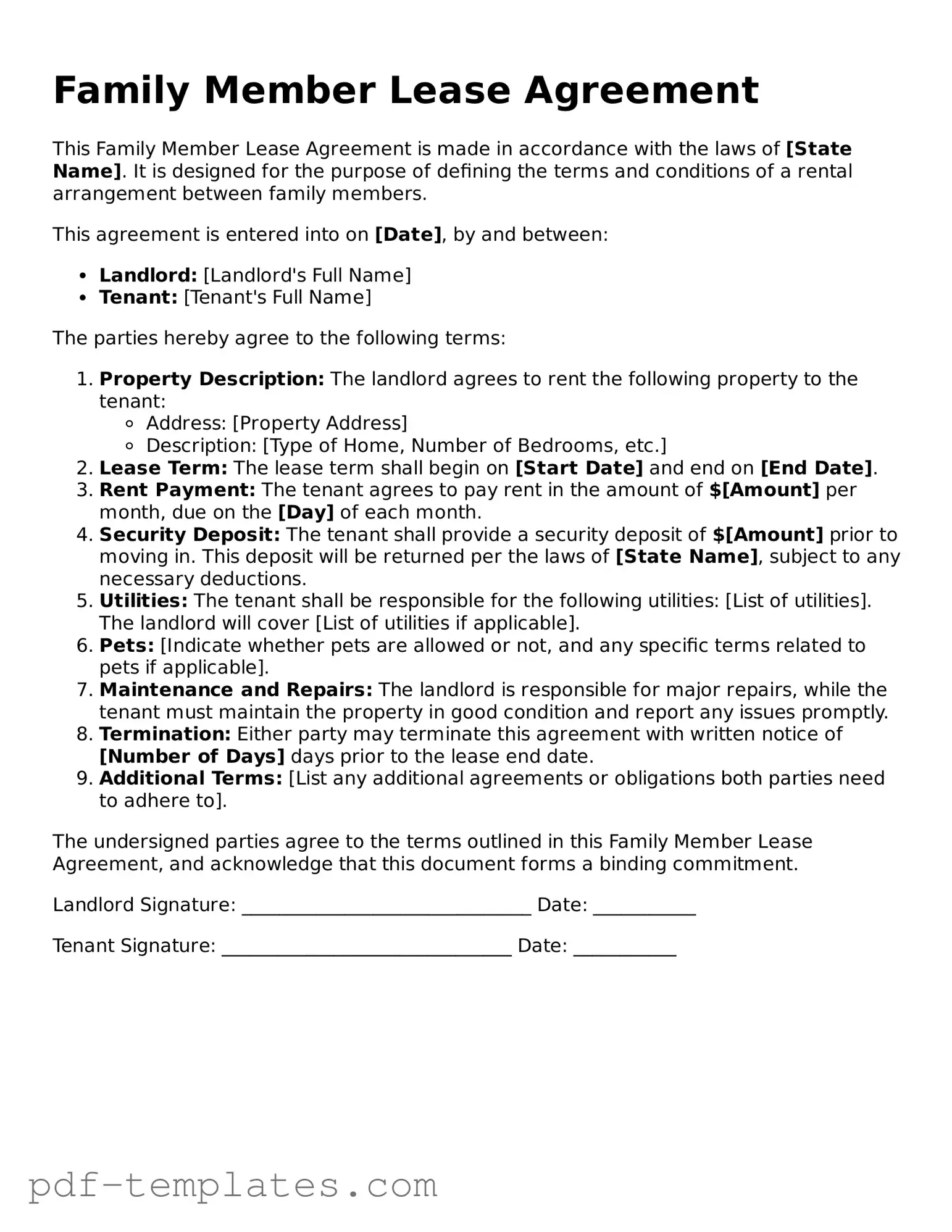The Family Member Lease Agreement is similar to a standard Residential Lease Agreement. Both documents outline the terms and conditions under which a tenant can occupy a rental property. They typically include details such as the duration of the lease, rent amount, and responsibilities for maintenance. However, the Family Member Lease Agreement often includes clauses that acknowledge the familial relationship between the landlord and tenant, which may influence the terms and conditions agreed upon.
Another document that shares similarities is the Roommate Agreement. Like the Family Member Lease Agreement, this document establishes the rules and responsibilities among individuals sharing a living space. It covers aspects such as rent distribution, utility payments, and house rules. The primary difference lies in the nature of the relationship; a Roommate Agreement is typically between non-relatives, while the Family Member Lease Agreement involves a familial connection.
A Lease Option Agreement also resembles the Family Member Lease Agreement in that it allows a tenant to rent a property with the option to purchase it later. Both documents detail rental terms, but the Lease Option Agreement includes additional provisions regarding the purchase price and timelines for exercising the option to buy. This can provide a pathway for family members to transition from renting to owning a home.
The Sublease Agreement is another document that parallels the Family Member Lease Agreement. This document allows a tenant to rent out their leased property to another individual. Both agreements require clear terms regarding rent, duration, and responsibilities. However, the Family Member Lease Agreement typically does not involve a third party outside of the family, whereas a Sublease Agreement often does.
A Rental Application is similar in that it is often used in conjunction with lease agreements. While the Family Member Lease Agreement specifies the terms of occupancy, the Rental Application collects information about potential tenants, such as their financial history and rental background. This document is crucial for landlords to assess the suitability of a tenant, even if they are family members.
The Family Member Lease Agreement can be further enhanced and clarified by utilizing additional resources, such as the California Lease Agreement form, which provides a comprehensive framework for outlining rental terms. For more information, you can access the necessary template at https://pdftemplates.info/california-lease-agreement-form/, ensuring that both landlord and tenant are protected and informed throughout the rental process.
The Eviction Notice can also be compared to the Family Member Lease Agreement. While the former is a legal document used to terminate a tenancy, the latter establishes the terms of that tenancy. Both documents are essential in the rental process, as they outline rights and responsibilities. However, the Family Member Lease Agreement aims to foster a cooperative living environment, while the Eviction Notice indicates a breakdown in that relationship.
Finally, the Property Management Agreement is similar in that it outlines the responsibilities related to managing a rental property. While the Family Member Lease Agreement focuses on the tenant's rights and obligations, the Property Management Agreement details the roles of property managers. Both documents serve to clarify expectations, but they cater to different aspects of the rental process.
